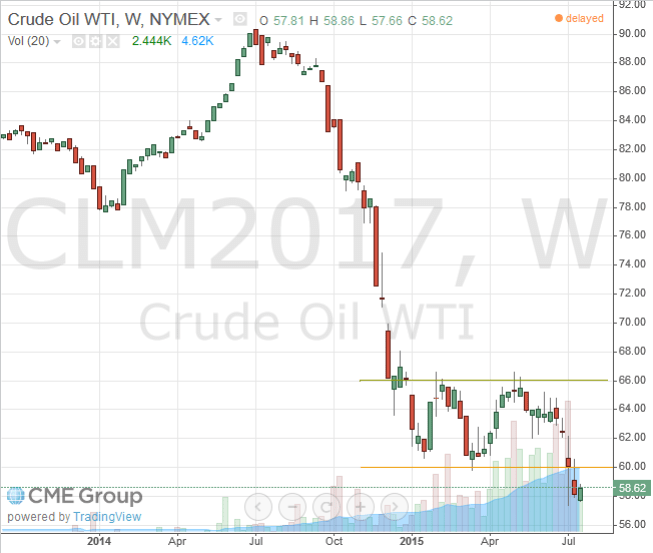Long-term June 2017 Nymex Light Crude futures (CLM2017) broke support at $60/barrel, offering a target of $54/barrel*.

* Target calculation: 60 – ( 66 – 60 ) = 54
In the short-term, September 2015 futures (CLU15) are testing support at their March low of $50/barrel. Breach is likely, given the long-term down-trend, and would offer a target of $40/barrel*.

* Target calculation: 50 – ( 60 – 50 ) = 40
Declining prices will hurt the Energy sector in the short/medium-term, but the benefit to the broader economy will outweigh this in the longer term. Lower fuel prices will especially benefit the Transport sector. Highly industrialized exporters like Germany, Japan, China and the broader EU, will also benefit. While oil exporters like Russia, Iran, the Middle East, Nigeria, Angola, Venezuela, and to a lesser extent Norway, face hard times ahead.























